Pigments, the monster synth plug-in, is still growing at full speed – now with a deep “harmonic” additive engine, more layers, and more tools in its palette. Meet Pigments 3.
Now, I’ve just grabbed this build – I’m in a little later on this one, but that’s okay, as I look forward to spending the next weeks with the final build.
But there are some gorgeous new tools. The whole tool and UI continue to get more refined, for one of the deepest-but-friendliest looking plug-ins anywhere – and maybe my favorite Arturia UI, in fact. (No runaway skeumorphism here.)
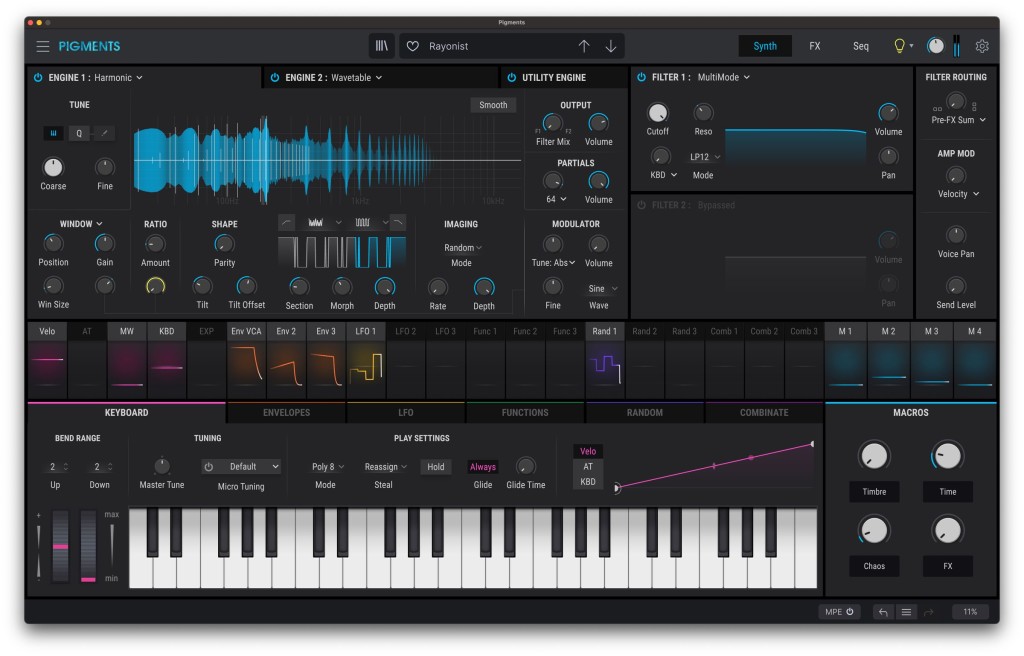
The big new addition (oops, unintentional pun) is the Harmonic Engine. It’s an additive synthesis tool with up to 512 partials, with complete control over partials (and modulation of partials), plus morphing dual formant filters.
That alone should keep you busy, but you also get:
More layers. A third Utility engine expands the architecture, with two additional noise sample layers and an extra oscillator layer.
More wavetables. 64 new ones, for a total of 164.
Roland-y bits. They can’t say that, but I can. The Jup-8 low-pass filter and the JUN-6 Chorus made their way into Pigments, which makes sense.
Pitch Delay. A modern, digital pitch delay tool, which options up some ambience and other precise timbral effects.
BL-20 Flanger. Okay, I’m fairly restricted in how often I, uh, flange, but this is a great one to emulate – the legendary (and rare) Bel BF-20 stereo flanger, which Arturia being Arturia, here has extra options. Like some of the other bits here, you’ve seen it elsewhere in Arturia tools if you’ve been watching closely, but having it as part of Pigments means extra sound design options inside the synth’s deep routing and modulation architecture.
Ramp waveform in the Virtual Analog engine (at last).
Route filters to the effects bus.
Multi-band compressor.
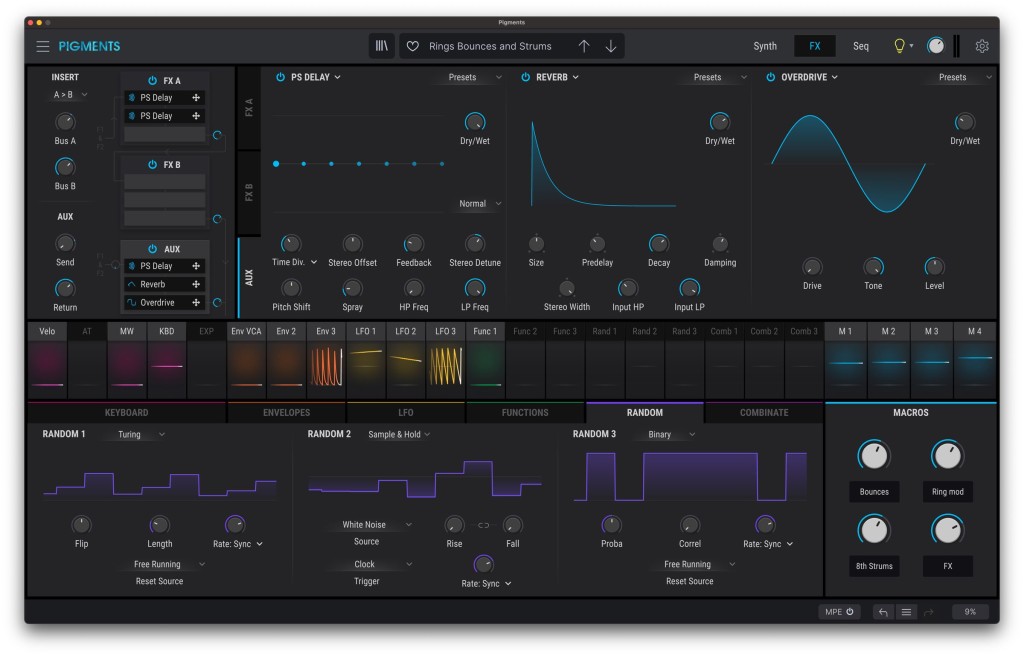
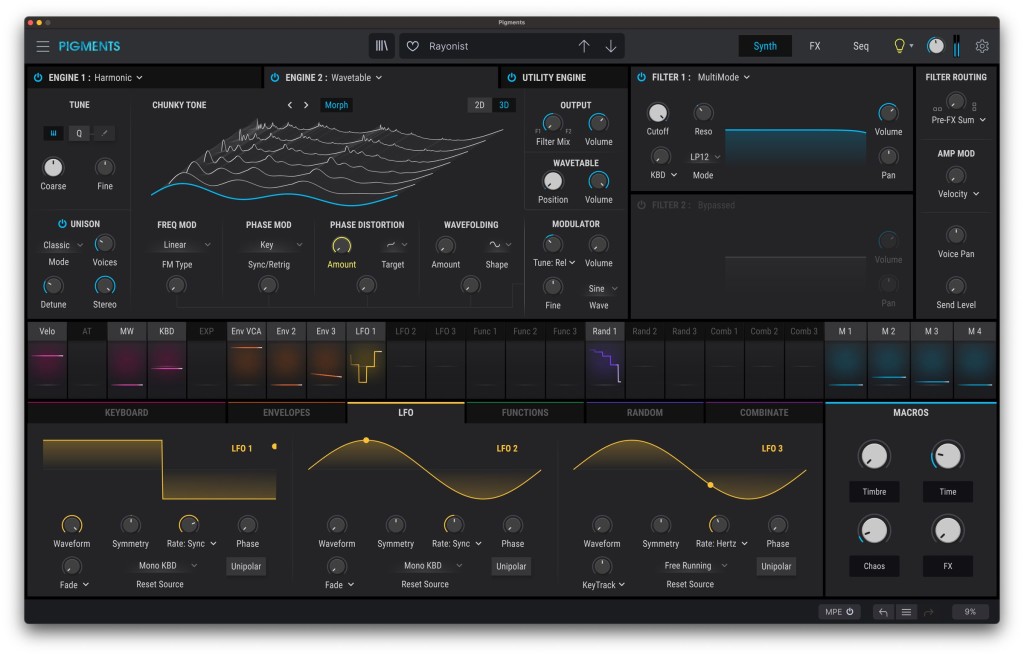
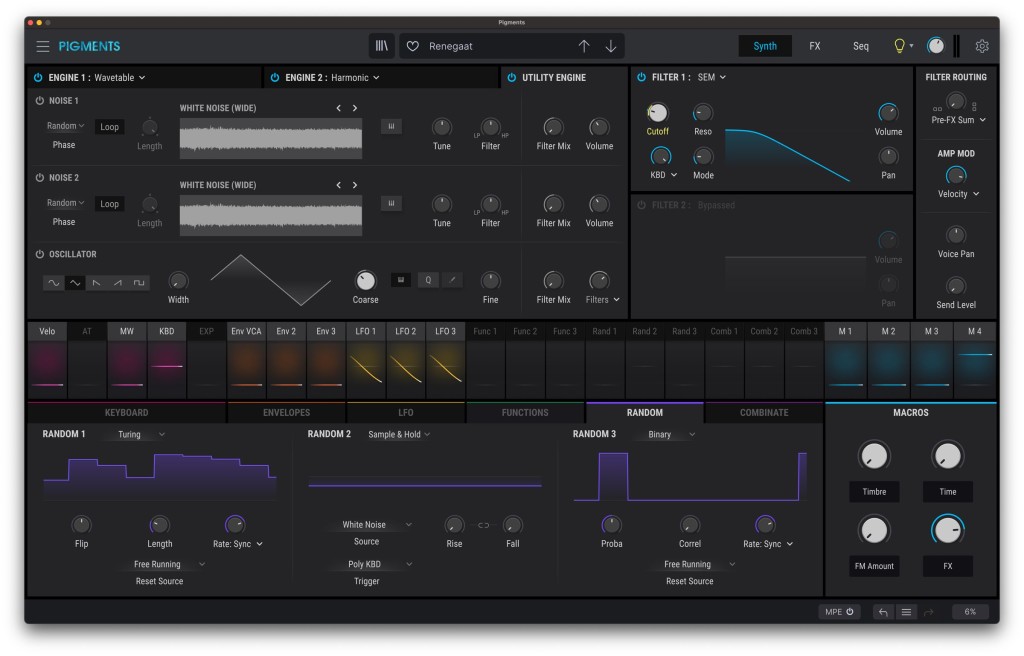
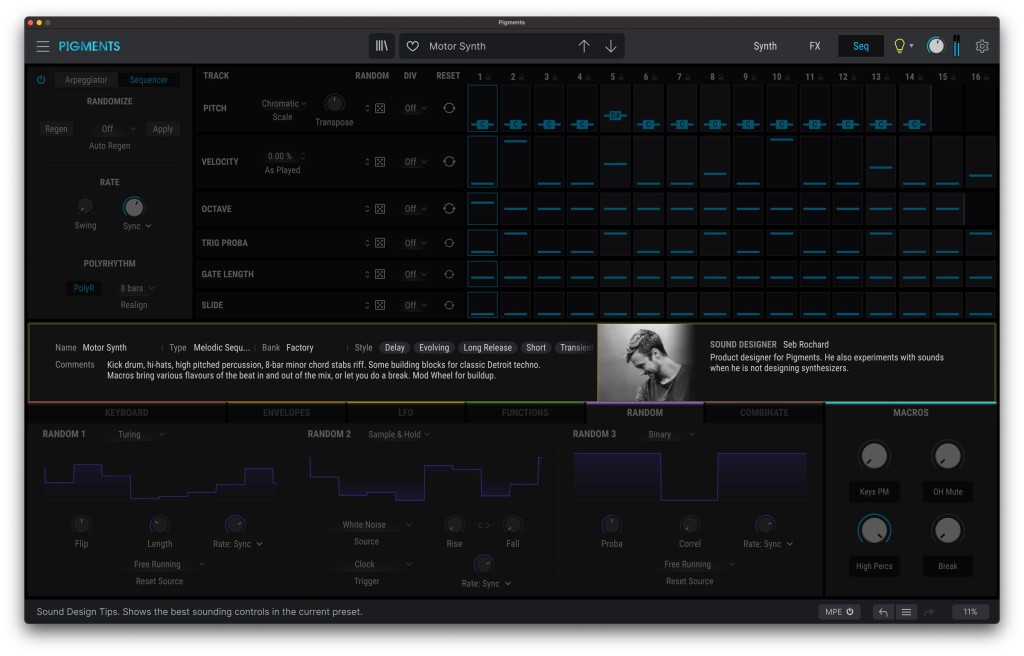
And of course, Pigments 3 comes with a ton of new presets and sound banks from some great people, plus more in-app tutorials. So prepare to go pretty deep for this one.
The crazy thing is really the price – the intro price new is 99€/$, which I’m fairly certain is less than the upgrade pricing from some competitors (cough). It’d stack up well against some of the rivals in this space normally, but with the discount even more so. You also get the Spectrum Sound Pack included new.
Upgrade pricing? It’s free. If you want the Spectrum Sound Pack, it’s 20 bucks instead of 99€/$, also for a limited time.
Both intro offers last through May 13.
Details:
https://www.arturia.com/products/analog-classics/pigments#en
Video tutorials
Okay, enough talking / admiring. Let’s actually learn this thing and make some music. Here goes:
The Harmonic Engine is a likely place to start:
Plus the Utility Engine for adding complexity to your sound:
Pitch Shift Delay is all the rage with the kids these days, generally (seriously, it’s all over a lot of effects in different forms):
And of course a multi-band compressor lets you polish your sound inside the synth. Just don’t go too crazy with this and annoy your mastering engineer, ‘kay?